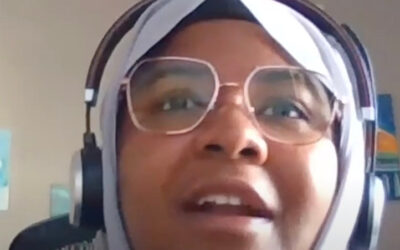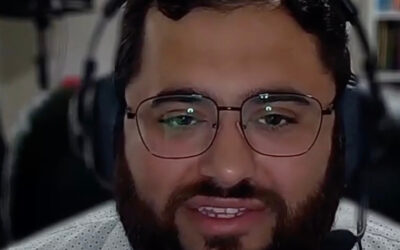Dr. Nichelle Ruffin On Her Influences from Student to Teaching Medicine
When Dr. Nichelle Ruffin walks into the labor and delivery floor at the Hospital of the University of Pennsylvania, she brings with her more than years of medical training — she brings the story of a young girl from Cleveland whose path to medicine began just steps away from some of the nation’s leading hospitals.
Now a faculty member in Penn’s Department of Family Medicine, Dr. Ruffin teaches medical students, delivers babies, and provides care in the community clinics of Philadelphia. But her journey to becoming a physician started at the Cleveland School of Science and Medicine (CSSM), a public high school uniquely positioned on the campus of John Hay in University Circle — within walking distance of both University Hospitals and the Cleveland Clinic.
That proximity, she says, changed everything.
“I went to John Hay, the Cleveland School of Science and Medicine for high school, which completely changed the trajectory of my life.”
Proximity That Opens Doors
At CSSM, Ruffin’s curiosity for medicine became a calling. Through partnerships with Case Western Reserve University and local hospitals, she joined weekly sessions with doctors and medical students that gave her a first-hand look at the profession. She still remembers diving deep into anatomy lessons and disease processes long before college.
“That’s when I really thought, this is something I can see myself doing,” she recalls. “It opened my eyes — this is very cool. This is something I can do.”
For Ruffin, those experiences weren’t just about exposure; they were about access. Growing up in a working-class Cleveland household — her father a police officer, her mother an administrative assistant — she had no family background in medicine. The connections she made through CSSM filled that gap.
“I’m the first medical doctor in my family,” she says. “I had no clue what the process was. That’s why I credit so much to my mentors and the people I met at CSSM.”
The Power of Place
CSSM’s location in University Circle isn’t just symbolic — it’s strategic. Nestled among Cleveland’s most prestigious hospitals and Case Western’s medical school, it gives students a front-row seat to careers that might otherwise feel out of reach.
“If I had gone to school somewhere else, those opportunities would have been barriers,” Ruffin says. “At CSSM, everything was within walking distance — and that made a difference.”
Inside the classroom, Ruffin found more than academic rigor. She found peers who shared her drive. Together, they formed a community of learners who pushed one another forward. “We were all smart,” she says with a laugh. “We all really enjoyed science and math. There was friendly competition — we wanted to be the top in the class. Without that environment, my outcome would have been different.”
A Scholarship, a Decision, and a Calling
When Ruffin learned about the Joan C. Edwards Scholarship — a full-tuition opportunity connecting CSSM graduates to Case Western Reserve University and its School of Medicine — she hesitated. Like many teenagers, she imagined college as a chance to leave home. But her parents and teachers helped her see what the scholarship really represented: a bridge from potential to purpose.
“There were some tears,” she admits. “But my teachers pulled me aside and told me what an amazing opportunity this was. They were right.”
That decision to stay in Cleveland not only gave her an extraordinary education, it freed her to choose a medical specialty based on passion, not debt. She chose family medicine — drawn to the power of prevention and relationships built on trust.
Representation and Empathy in Medicine
Now practicing and teaching in Philadelphia, Dr. Ruffin says her background helps her connect with patients who often feel unseen by the healthcare system. Many of her patients are from racial or ethnic minority groups and have reasons to distrust medical institutions. She sees her role as rebuilding that trust — one conversation at a time.
“I treat my patients as if they’re family,” she says. “I come from a similar background, and I think that helps me listen differently.”
Her approach to teaching medical students echoes that same empathy. She reminds them that medicine is not just about prescribing the right drug but about understanding the person sitting across from you.
“It’s not that patients haven’t heard recommendations before,” she says. “It’s that the message hasn’t been delivered in a way they’re ready to receive. If we don’t build trust, we’re just talking for nothing.”
A Model Worth Replicating
Looking back, Dr. Ruffin says her story — from a public school classroom to a faculty role at Penn Medicine — isn’t an exception. It’s proof of what happens when educational opportunity is placed where it’s most needed.
“CSSM is preparing people not just to go to college,” she says, “but to do well enough to be accepted into medical school and become practicing physicians. Moving it or changing that model would be a disservice to Cleveland’s students.”
Her journey shows what’s possible when a city’s greatest institutions invest in its own young people — not as charity, but as a partnership of proximity and purpose.
For Dr. Nichelle Ruffin, that partnership began with a short walk across the street — and led to a lifetime of helping others.


0 Comments